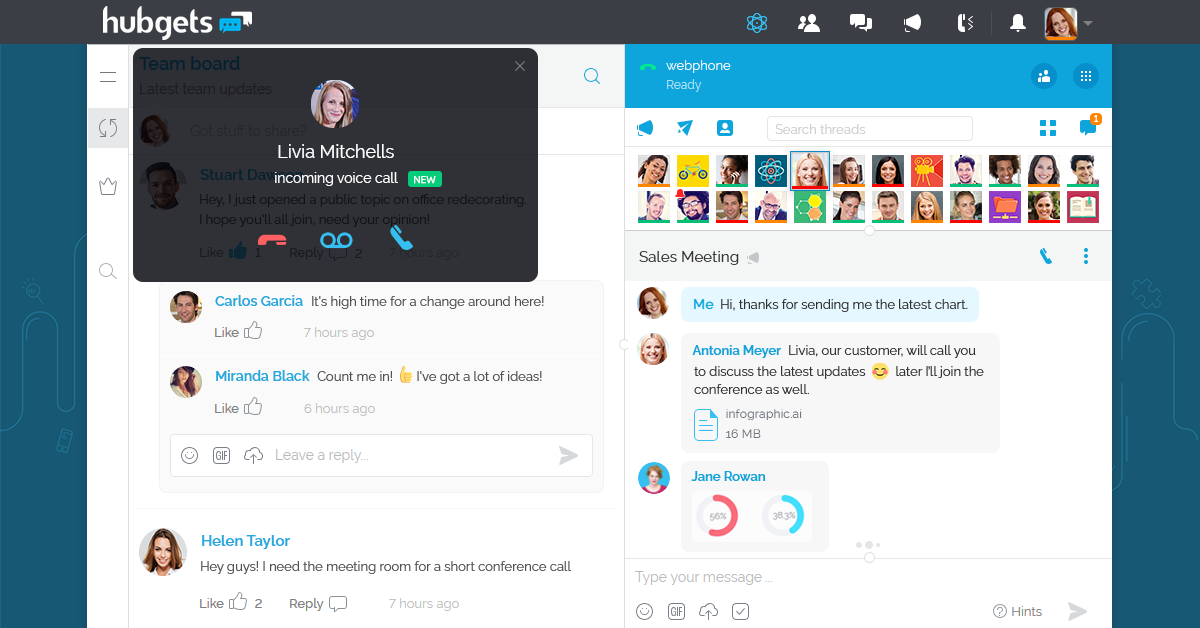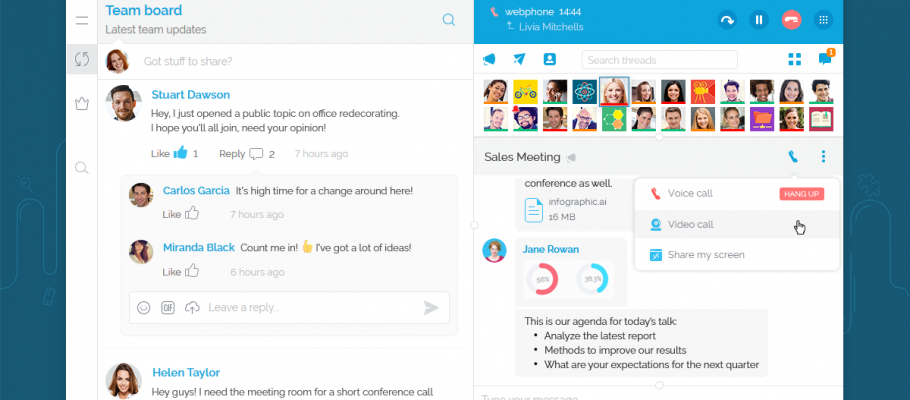Procrastination is the archenemy of productivity. Some people waste hours and hours just avoiding the task they will eventually have to do anyhow. This goes from students who delay the moment they start working on their homework, up to top professionals who are overwhelmed by the amount of work in front of them. The purpose of this article is to provide helpful advice to better understand procrastination and how to overcome it.

Posts Tagged Under: boost productivity
Working with remote teams is a challenge even for the most savvy team leader. Having people from around the world working together can be both a blessing and a challenge. On one hand, you have access to a global workforce, which allows you to enroll the most suitable candidates. But on the other hand, there are lots of obstacles to overcome. In this article we are going to discuss about virtual meetings, one of the hurdles of working remotely, and offer some advice to help you get past it.

Many companies nowadays emphasize the importance of talent. They are driving on the idea that a few top employees are responsible for most of the overall success. However, most recent productivity studies have shown that even those shining superstars need the help of a strong team in order to succeed. Therefore, the importance of teamwork is emphasized more and more, with companies spending millions on team building strategies.

For a second, I challenge you to leave aside everything you’ve learned or heard about productivity so far. Every advice that prompts you to wake up before sunrise and read your goals out loud every night. The purpose of this article is not to invalidate the oldest tricks in the book. However, we cannot ignore the fact that many recipes are either hard to follow, or simply won’t work for a lot of people. The good news is there are ways to boost productivity 🙂

Team collaboration goes big when your team goes small. Team size in itself affects productivity and team synergy. Smaller teams have higher engagement, less overhead, better flow, and improved decision making. Best of all, it is more cost-effective to reach goals with smaller teams.
Yet, many times organizations go with “bigger is better. This often comes at the cost of effectiveness and produces sub-par results. So much so that it may be better to simply create two smaller teams than using a large one.

Reward teams and you get to build motivation, boosts productivity and develops team trust. Indeed, offering people recognition boosts their self-esteem, confidence and happiness at work.
Some other advantages are increased employee engagement, less staff turnover, higher customer satisfaction ratings and the fact that organization grows in its sense of purpose. To be sure, there are plenty other good reasons to reward teams. But only a few great ways to do it.

Achievable goals are the pinnacle of a smart goal-setting strategy. Sure, you should be able to achieve your goals, generally speaking. Yet, there is a lot more to achievable goals. This is because goals are high-productivity enablers. By itself, goal-setting provides structure to individual or team efforts.
And making sure that goals are achievable builds on that. Most of all, achievable goals motivate. They become a milestone. One that requires resilience. To put it simply, achievable goals are something people feel. Achievable goals reward because they feel like the achievement that they are.

Working remotely is on the rise. More and more people want to work from a location of their choice. At home, wearing pajamas, on a flexible schedule. On a beach, next to a pinna colada.
Internet innovation drives remote work. Bundles of tech solutions. Long commutes in regular jobs incentivize it even further. Besides, research shows remote workers are more productive. They do more with less, which leads to work intensification.
To be fair, the reverse is nearly as likely. People that do remote work have to be productive to make the cut. The vast majority of people, however, have issues with getting motivated. Everything is so distracting. There are far too many sources for interruptions. From getting the wrong order in a coffee shop to a noisy scanner in a co-working space. While at work, you at least have a productivity benchmark. And teams to boost your morale. At home, you might get stuck in between the fridge and the couch while binging on Netflix.

Successful teams are what drives any company. They are what makes the difference. And, above all, it’s successful teams that make or break your business.
However, creating successful teams isn’t quite science yet. After all, you can put a bunch of very smart and talented people together, and still fail miserably. Or you can band together a group of people that, for whatever reason, synergize. They click together, overcome obstacles, and overachieve.

Be more productive to experience life to its fullest. It’s the chant of the decade. For many, however, it’s also an impossible dream. There are limits to what you can achieve. And there are limits to how well you can do it. It used to be that you could stay ahead. Now you need to do your best to keep up.










